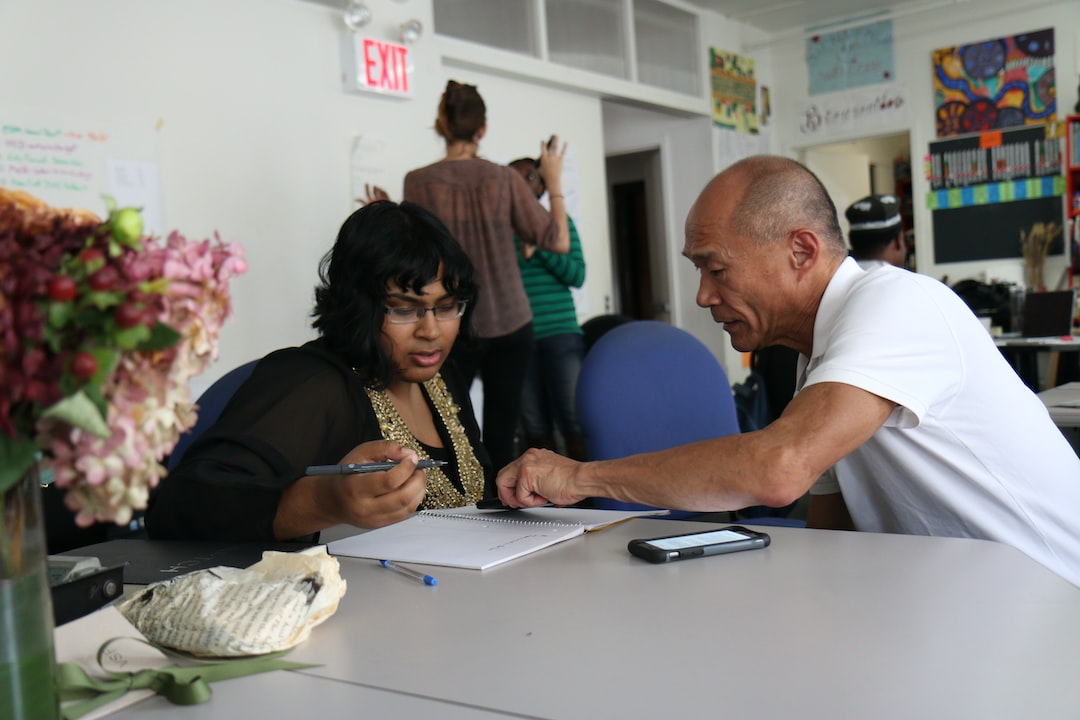Introduction
Table of Contents
The enchantment of seamlessly transitioning between different tongues is a skill that seems almost magical to those of us who speak only one language. We are captivated by polyglots—those skilled language learners who can easily converse in multiple languages. In this article, we’ll peel back the curtain to reveal how polyglots learn languages. If you’re keen on languages, you’re in for a treat: we’re about to share a wealth of practical tips that will fuel your journey towards becoming a fluent speaker of multiple languages. Get ready to inject your language learning process with tried-and-true techniques from the polyglot playbook.
The Polyglot Approach to Language Learning
What sets a polyglot apart isn’t just the number of languages they speak, but their fervent passion for language and their strategic approach to learning. A polyglot dives into learning with a sense of exploration, smart planning, and an unyielding drive for real-world practice. They rarely depend on traditional classes alone; instead, they immerse themselves in the language, embrace modern tools, and often use creative resources like flashcard apps. Listening intently and speaking without fear, polyglots integrate vocabulary-building into their day-to-day lives, treating grammar as a puzzle to solve. At their core is a persistent, patient spirit and a choice to connect with language-speaking communities. These methods are the heartbeats of how polyglots learn languages, and with some dedication, you too can adopt these strategies to become a language maestro.

Immersion in the Language
The Role of Cultural Immersion
For polyglots, cultural immersion is essential. It means diving into an environment where the language thrives with all its cultural subtleties and authentic usage. True immersion isn’t just about being exposed to a language; it’s about actively interacting with it as native speakers do. This could mean traveling, living in a foreign place, or joining in cultural festivities. Even without leaving home, you can immerse yourself by tapping into the cultural heartbeat of the language, leading to a richer understanding that goes beyond words and sentences.
Everyday Practices for Immersion at Home
Traveling to where your target language is spoken is great, but not always possible. However, creating an immersive environment at home is achievable. Change your tech’s language settings, listen to music, watch movies, or read in the language you’re learning. You can also follow native speakers on social media, join language exchanges, or label things around the house with their names in the new language. These tactics foster an environment that simulates real-life interaction with the language, just as if you were surrounded by it in its native land.
Strategic Use of Learning Resources
Choosing the Right Materials
Picking the right resources is fundamental for mastering a language. Polyglots are skilled at finding materials that suit their level and also spark their interest. For a beginner, structured textbooks offer foundational grammar, whereas intermediate learners might dive into topic-specific articles or podcasts. It’s important to find materials that push you a bit but are still understandable—striking that delicate balance that Stephen Krashen calls the “i+1” level.
Technology and Language Learning Apps
The digital age has transformed the language learning landscape, and polyglots are taking full advantage of that. From vocabulary games to conversation simulators, tech offers a plethora of adaptable and enjoyable ways to learn. Apps like Anki also use spaced repetition to strengthen memorization. Polyglots harness these tools to supplement their learning, not as their sole strategy, to broaden and reinforce their language skills.

Importance of Listening and Speaking
Listening Techniques and Tools
Active listening is a powerful tool in a polyglot’s arsenal. Techniques like shadowing—the act of repeating spoken language instantly—can boost pronunciation and rhythm. Listening to varied resources such as audiobooks or language CDs sharpens your ability to understand a language as it’s naturally spoken. Diversifying your listening practice, including different accents and dialects, equips you for genuine conversations with native speakers.
Practicing Speaking from Day One
Talking the talk is as important as walking the walk in language learning. Polyglots say start speaking the language from day one, accepting that mistakes are part of the learning process. Speak to yourself, find a language buddy, or delve into conversations with fluent speakers. Focusing on clear communication rather than perfection helps build confidence, fluency, and cements language structures in your mind.
Building Vocabulary: Techniques and Memory Hacks
Contextual Learning vs Rote Memorization
Polyglots know that context matters when learning new words. They pick up vocabulary through sentences and real-life situations, which is a more natural and effective way of learning than memorizing word lists. Contextual learning makes words stick because it ties them to experience and emotions, creating strong mental connections that aid recall.
Memory Palace and Spaced Repetition
Memory Palace and spaced repetition are two memory-boosting strategies polyglots love. The Memory Palace involves visualizing a familiar space and placing new words within it, while spaced repetition involves revisiting information at set intervals to cement it in your memory. Implementing these can be as simple as picturing vocabulary along a routine path or setting reminders to revise terms, turning the brain’s natural memory capabilities to your advantage.
Grammar: Understanding vs Memorization
Grasping Grammar through Patterns
Instead of rote memorization, polyglots decode grammar by discerning patterns. Recognizing similarities in how verbs conjugate across similar languages, for example, can simplify learning and speed up proficiency. This approach provides a broad perspective that leads to deeper comprehension and more instinctive language use.
Learning to Think in the Target Language
Thinking in a new language is a breakthrough moment, and it’s something polyglots strive for from the outset. They sidestep translating from their mother tongue by crafting thoughts directly in the language they’re learning. This shift is key to fluency and becomes second nature through practice and engagement with the language in daily life, truly embedding linguistic patterns.

Consistency and Patience in Language Learning
Setting Realistic Goals and Deadlines
Steady engagement with the language is pivotal to success. Polyglots set tangible goals, like daily interaction with the language or reaching a point where they can enjoy a full book. They also set deadlines to keep on track. Dividing the learning process into achievable steps helps maintain momentum and skillfully builds up language capabilities.
Dealing with Plateaus and Frustration
Every language learner faces periods of stagnation and waning motivation. Polyglots respond by mixing up their study routine, looking for fresh materials, or focusing on different aspects of the language. Staying patient and keeping a positive perspective are vital, as is understanding that every stage, even the plateaus, contributes to your growth as a language learner.
Community and Social Learning
Importance of Language Partners and Tutors
Interacting with others is a key part of how polyglots learn languages. Language partners and tutors not only provide practice but also insights and feedback that enrich the learning experience. Exchanges with native speakers and learners offer authentic practice, making the process of learning a language more effective and enjoyable.
Engaging with Online Language Communities
Online platforms have made it easier to join language learning communities worldwide. Polyglots tap into these resources for support, resources, and camaraderie among fellow enthusiasts. Such virtual groups keep motivation high, offer fresh perspectives, and nurture a sense of belonging in the language learner’s journey.
Conclusion
The methods polyglots use to learn languages are varied yet intentional. They fully immerse themselves, utilize diverse resources, and prioritize listening and speaking. Vocabulary is built in context, grammar is understood through patterns, and thinking in the target language is a clear goal. Regular practice, patience, and setting achievable goals are key, as is seeking out community and social interactions. By embracing these tactics, you can enrich your language learning journey and perhaps one day stand among the polyglots. Let the delight of speaking a new language, the excitement of cultural connection, and the advantages of being multilingual spur you on. The journey to mastering multiple languages awaits you—embrace it with enthusiasm and let the adventure unfold.
Frequently Asked Questions: How Polyglots Learn Languages
What strategies do polyglots use to learn multiple languages?
Polyglots typically engage in immersive learning, strategic use of diverse learning resources, integrating technology, and they emphasize the importance of consistent listening and speaking practice. They prioritize understanding grammar patterns over memorizing rules and focus on building a strong vocabulary through contextual learning and memory techniques.
Can you immerse yourself in a language without traveling?
Absolutely! You can recreate an immersive experience at home by changing your devices’ language settings, consuming media in your target language, participating in language exchanges online, and using labels around your home to learn vocabulary in context.
How important are listening and speaking in learning a new language?
Listening and speaking are crucial from the very beginning. Polyglots use active listening techniques, like shadowing, and encourage speaking the language regularly, even with mistakes, to boost fluency and comprehension.
Is grammar memorization necessary to become a polyglot?
Not necessarily. While understanding grammar is essential, polyglots often learn grammar by recognizing patterns rather than memorizing rules. This approach leads to a more natural and intuitive use of the language.
How do polyglots handle the frustration of learning plateaus?
Polyglots deal with learning plateaus by varying their study methods, searching for new materials, and focusing on different language aspects. They remain patient and understand that persistence is key to overcoming these challenges.